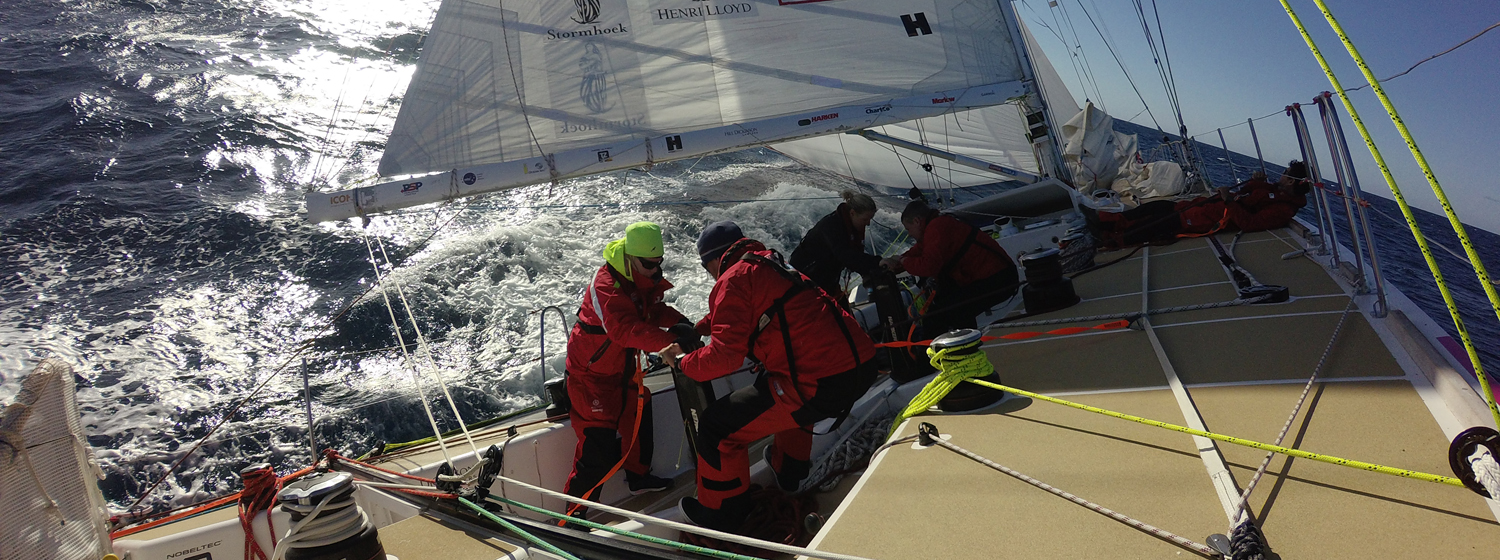Safety First
03 February 2017
Ocean racing is at the mercy of the elements and these can include extreme weather consisting of high winds and big seas, posing a risk of potential damage to yachts and injury to crew. Good maintenance, operating standards and procedures are used to minimise these risks and ensure that safe working practices are maintained. Our aim is to ensure all risks are identified and manged, providing appropriate levels of safety.
Many crew are attracted by the scale of the challenge and adverse conditions so that they can achieve something remarkable, whether it be a single ocean crossing or an entire circumnavigation. The weather makes no exception for their status; they face the same challenges as any other ocean race and for that reason professional standards are applied throughout.
Clipper Race training is designed to ensure crew can handle the specific demands of large yacht ocean racing so that even novices emerge as very competent sailors. Training also includes an independently provided sea survival course recognised by the RYA and World Sailing even though it is not a requirement.
We have given many interviews to the media on this topic, especially following the two tragic fatal incidents experienced in our tenth edition, the first in the twenty year history of the Clipper Race. The most recent request came from experienced sailing journalist Mark Jardine for a special report in YachtsandYachting.com which has just been published.
In the introduction Mark Jardine states: “The Clipper Round the World Yacht Race has trained more than 4000 participants over ten biennial editions. It has always placed safety as its number one priority, setting a highly regarded benchmark in the sector, identifying and managing risks.
“The Clipper Race continually reviews and develops its standards and procedures at or beyond those required by the UK's Maritime and Coastguard Agency (MCA). It has also introduced many safety and training initiatives in areas where there are no statutory requirements.
“Having been on board Clipper Race yachts during Man Overboard drills, which were monitored by the MCA and MAIB, I have seen first-hand just how thorough and professional a job the race organisers and Skippers do.”
The report focuses on an extensive interview with our Race Director Mark Light in which he emphasises safety from his experience as both a Clipper Race skipper in 2011-12 and two editions as Deputy Race Director before taking up his current role.
“Every crew member, regardless of their previous experience, will do exactly the same training, a minimum of four weeks across four individual courses. Whether you've signed up to the Clipper Race as a complete novice or whether you've owned a boat for 25 years, you do exactly the same training so that we know everyone knows the details,” emphasised Mark.
He added: “I think if you spoke to any of our crews who have done the race, or anyone in training now, then they'd be able to tell you what the key safety points are - it's drummed in right from the off, and it has to be.”
The Clipper Race is continually working with suppliers to develop improvements in safety equipment to build on its experience in previous races. This has included life jacket developments and searching for reliable methods of auto-activation of AIS beacons which are not linked to life-jacket inflation which can happen frequently on deck in very wet conditions.
Following lessons learned in the rescue of an MOB casualty in the 2013-14 edition AIS beacons were added to the danbuoy deployed to mark and track MOB positions in the prevailing conditions. The race will equip all its boats with personal AIS beacons in the 2017-18 edition for the entire crew, ideally offering an appropriate automatic water-activation method if one becomes available.
Clipper Race founder and Chairman Sir Robin Knox-Johnston was also interviewed for the YachtsandYachting.com report. He stated: “Sailing can be dangerous, but we train to make it safer, and that's what we do. It's not just in the Clipper Race, it's throughout the sport. We are in fact a very safe sport, but at the end of the day people have to remember those rules, their training and what they've been taught and then it's a safe game. If they start forgetting the rules then it becomes dangerous.”
Read Mark Jardine’s full article at YachtsandYachting.com here.
Join The Race